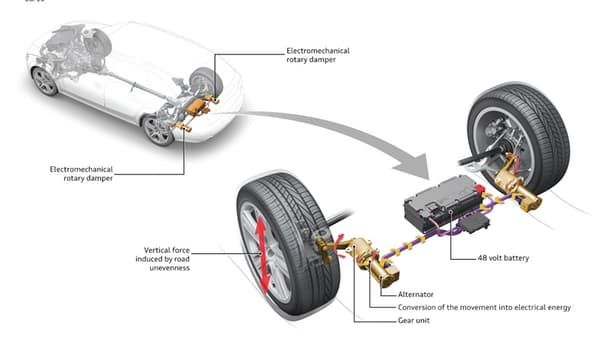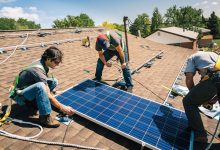
Your vehicle’s suspension has two jobs – keep the wheels on the road so you can safely control the car and provide a smooth ride over any bumps. Suspension parts are susceptible to wear over time, and if not replaced, they can impact the vehicle’s ability to adapt to harsh road conditions.
Nothing tests your suspension parts like hard braking and sudden weight shifts. In such situations, new suspension parts could be the difference between maintaining control and avoiding swerving off the road or hitting other vehicles. You shouldn’t wait to have an accident to learn that your suspension system is failing. It is advisable to maintain and inspect your suspension system’s different components regularly.
In this guide, we will help you get started on how different suspension parts work and how to troubleshoot them.
Table of Contents
Wheels and wheel bearings
The wheel bearings take the vehicle’s load and enable the wheels to turn easily on their axle without friction. They are located inside the wheels hub unit.
Troubleshooting tips
The first common sign that you have a worn set of wheel bearings is noise. If you notice a grinding or growling noise that usually changes with speed or noises that get softer or louder when turning, a humming sound that increases as you turn or even squealing and chirping. If you also feel any vibrations or wobbling that seem to come through the floorboards as you drive could be a sign of failing wheel bearings.
Wheel bearings typically last 85.000 to 100,000 miles. Some can even go up to 150 000 miles, but it is essential to maintain them properly. You can start by applying grease to help your wheel bearings last longer and avoid friction. Do this every 25,000 – 30,000 miles, and you will have no issues.
Failing wheel bearings can also cause excessive tire wear, so ensure you check those as well. It’s better to change your tires when you notice they are worn. Also, remember to check the inner edges because sometimes there is usually abnormal wear which can leave a tire unsafe on the edge while the tread still looks good in the center. If your faulty wheel bearings are causing tire wear, you should also replace the tires because even after replacing the bearings, the noise will still be there.
Shocks and struts
Shocks and struts are your vehicle’s main suspension components and also the most important ones. The two parts serve similar functions limiting suspension travel. They work by converting the spring movement into heat energy which is then dissipated by hydraulic fluid. This prevents your vehicle from bouncing while driving on bumpy roads.
Struts typically provide structural support and are the most common on vehicles. Shocks are usually mounted directly to your vehicle’s frame on one and the lower suspension on the other. You can find them on trucks, SUVs, and vans.
Troubleshooting tips
The most common signs that your struts or shocks are failing and need replacing is when you notice increased braking distances or the front end diving downwards during stops, oil and other fluids leaking from the shocks, unstable steering, and excessive bounce.
Shocks and struts need replacing as soon as you hit 30,000 miles, depending on the road condition you drive in. You can also ask to have them checked if you notice any of the problems mentioned above.
Coil springs
Coil springs usually work as a buffer between your vehicle and the road absorbing and storing energy. There are different coil spring configurations. Some have a shock assembly that combines the shock and the coil spring as one unit. Others have a separate shock and coil spring arrangement. Some also have the shock through the coil spring but will require the spring removal when you go for shock service.
Troubleshooting tips
The most common signs that you have faulty coil springs and need replacement are when the vehicle sags, handles poorly, or droops. It is important to note that when you are replacing your coil springs, ensure that you replace the shocks.
If you are not familiar with cars, leave the work to a professional because working with coil springs can be dangerous. The energy from a compressed coil spring suddenly released can harm you.
Stabilizer bars and bushings
The stabilizer bar, also referred to as anti-roll bar or anti-sway main job is to stabilize your car during a sharp turn and prevent the vehicle from rolling over. The stabilizer bar is a short rod that connects your right and left wheels in the rear and front. They are attached to the chassis using flexible rubber bushings.
Troubleshooting tips
If you notice sloppy or loose handling from your vehicle’s steering wheel, you may need to replace the bushings on your car’s stabilizer bars. New bushings will give your vehicle a stable new feel and make your car stable when cutting corners.
It would help if you replaced bushings every 50,000 miles. If you notice your car leaning on corners, then consider replacing your stabilizer bars with larger ones.
The rod ends and ball joints
The rod ends are usually the final connecting point between your steering linkage and the wheels. On the other hand, the ball joints enable the front automotive suspension to travel up and down and the wheel to turn. They both work together to let the wheel steer and move up and down.
Troubleshooting tips
Faulty worn or failing tie rod ends, and ball joints may cause erratic steering. If you notice a clunking sound when driving over bumps, it may also indicate you need new ball joints. If you also hear a popping sound when moving the steering wheel while parking also shows you have worn tie rods.
If a rubber boot is damaged or missing, that also requires replacement. The rubber works by keeping dirt out and grease in. without adequate grease; auto suspension components will wear faster.
To determine whether you are experiencing suspension problems is easy because the issues are noticeable when driving. It is essential to maintain your car and always have it serviced regularly to avoid any issues when driving. If you need any genuine diesel parts, you can check out https://goldfarbinc.com/collections/bosch-injection-pump.
Follow TodayTechnology for more!








